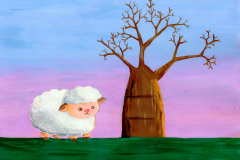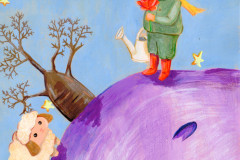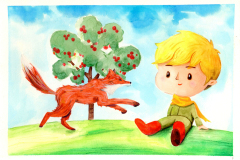Introduction
Our planet’s oceans cover about 71% of the Earth’s surface and host a vast variety of sea creatures. This underwater gallery holds countless forms of life, from the tiniest plankton to the largest whales. These creatures live in different habitats, such as coral reefs, kelp forests, and deep trenches. The ocean is a complex environment that supports rich ecosystems.
This article invites you to dive deeper into the world of sea creatures. You will learn about the types of marine life, their habitats, how they interact, and their importance in maintaining the health of our planet. Get ready to explore the captivating underwater world that plays a crucial role in our lives and the global environment.
The Diversity of Sea Creatures
The ocean holds life in forms that range from almost invisible to massive. At one end, you have microscopic plankton—tiny plants and animals drifting with currents. They seem insignificant, but they form the foundation of almost all marine food chains. Some plankton measure less than a millimeter—hard to imagine, right? Yet, they produce much of the oxygen we breathe and feed countless species.
On the opposite scale are whales, the largest creatures on Earth. Blue whales can grow over 100 feet long, weighing as much as 30 elephants combined. These giants filter-feed on tiny krill, which is a stark reminder that size doesn’t always define role or importance in the ocean.
The variety of sea life is often split into groups like:
- Fish: From colorful reef dwellers like clownfish to deep-sea predators like the anglerfish.
- Mammals: Whales, dolphins, and seals that breathe air and often live partially on land or ice.
- Invertebrates: Creatures without backbones like octopuses, jellyfish, and sea stars.
- Plants: Not just seaweed, but phytoplankton that photosynthesize, fueling much of life below waves.
- Microorganisms: Includes bacteria and archaea, tiny yet incredibly numerous and essential for nutrient cycles.
Sometimes, it’s tricky to pin down categories strictly. Consider the comb jellyfish—it looks like a jellyfish but belongs to another group entirely. Or think about how plants like kelp can grow large but aren’t animals. The sea isn’t a neat place; it’s messy and fascinating that way. You might find yourself wondering which species you’d spot first if you could dive into the depths without any equipment.
Marine Habitats and Where Sea Creatures Live
Coral Reefs and Kelp Forests
Coral reefs are often called the “rainforests of the sea” because of their complexity and life density. They form in shallow, warm waters where sunlight reaches the seafloor, allowing corals and tiny photosynthetic algae to thrive. These reefs provide shelter, food, and breeding grounds for a vast range of sea creatures. You’ll find everything from small, colorful fish darting between coral branches to slow-moving sea turtles grazing on algae.
Kelp forests grow in cooler, nutrient-rich waters along coastlines. Unlike coral reefs, they consist of large brown seaweeds anchored to rocky bottoms. The towering kelp creates underwater canopies that protect fish, sea otters, sea urchins, and even some types of sharks. These forests shift with ocean currents, making them a bit unpredictable habitats, which might explain the mix of creatures finding refuge there. It’s fascinating how such different structures—rigid coral versus swaying kelp—support similar levels of biodiversity.
The Open Ocean and Deep Sea
The open ocean, or pelagic zone, stretches far beyond coastal waters. It’s a huge, often harsh environment with creatures adapted for life in constant motion or sudden scarcity of food. Think of large schools of tuna slicing through the blue or massive whales gliding silently. Here, many creatures rely on speed or migration to survive, traveling great distances to breed or feed.
Below the sunlit layers lies the deep sea—dark, cold, and under immense pressure. Life here looks strange compared to shallow waters. Creatures like anglerfish use bioluminescence to lure prey in the pitch-black depths. Others have huge mouths or slow metabolisms to cope with scarce food. This environment challenges life in ways few places on Earth do; perhaps that’s why it remains so mysterious and captivating. You might wonder how such fragile-looking beings manage to thrive where light never reaches and temperatures hover near freezing.
Feeding and Survival Strategies of Sea Creatures
How Sea Creatures Find Food
You might think all sea creatures hunt actively, but many rely on other methods to gain their meals. Take filter feeders like sponges or baleen whales—they sift through water, capturing tiny plankton and organic particles as they move or stay still. Some fish and sea turtles graze on algae or seagrass, almost like underwater cows. Then there are predators: sharks, octopuses, and groupers who actively chase or ambush prey. Others scavenge, feasting on dead animals or leftovers, like hagfish or certain crabs. It’s a varied buffet out there, and these feeding styles reflect the diverse environments and challenges creatures face underwater.
Adaptations for Survival
Survival underwater isn’t just about food—it’s about coping with often harsh conditions. Physical traits like camouflage let creatures blend in, avoiding predators or sneaking up on prey. The anglerfish’s glowing lure is a peculiar but effective adaptation in deep, dark waters where light is scarce. Behaviorally, some dolphins use teamwork for hunting, while others, like sea cucumbers, eject sticky threads to deter attackers. Many have developed thick shells or spines for protection. Sometimes, the way they move or rest helps conserve energy in cold or nutrient-poor regions. It’s fascinating to see how each species negotiates its survival, sometimes by tactics that seem quite unusual or even contradictory at first glance.
The Role of Sea Creatures in the Ecosystem
Producers and Consumers
You might think that the ocean’s life depends mostly on the big fish or whales, but really, it all begins with tiny producers like algae. These simple organisms create oxygen through photosynthesis and form the base of almost every marine food chain. Without them, the vast ocean life would struggle to exist. Consumers—from small zooplankton to huge predators—rely on these producers either directly or indirectly. It’s like a chain reaction: algae feed tiny animals, which get eaten by bigger ones, and so on. Energy passes along this web, but it’s not always neat or predictable. Sometimes unexpected changes in algae populations ripple through the food web in surprising ways. Have you ever wondered how a small change in this microscopic world can affect what you see diving around a coral reef?
Builders of the Sea
Sea creatures don’t just eat or get eaten. Some create the very homes that support entire communities. Corals, for example, form vast reefs that shelter countless species. These reefs protect shorelines from waves, which is crucial for many coastal areas. I’ve always found it fascinating that such delicate creatures can build structures lasting for thousands of years. Besides corals, animals like oysters and certain types of sponges contribute to reef-building, creating complex habitats where life thrives. But it’s not always clear-cut. While these habitats offer shelter, they also compete for space, and changes in one species can disrupt the balance. It makes you think—how stable really are the environments beneath the waves?
Marine Biology and Scientific Study of Sea Creatures
What is Marine Biology
Marine biology is the study of life in the oceans and other saltwater environments. It focuses on the creatures that live beneath the surface—from tiny plankton to massive whales—and how they interact with their surroundings. Scientists in this field don’t just observe animals; they explore behaviors, reproduction, feeding patterns, and even evolutionary history. You might imagine marine biologists spending hours in a lab, but they also work in the field, sometimes in challenging conditions, getting their hands wet—literally—to learn more about what’s underwater.
Tools and Methods for Research
Studying the ocean isn’t easy. Direct observation by divers helps, but it can’t cover everything—depths go far beyond human reach. That’s where technology steps in. Submarines allow scientists to dive deep and stay longer underwater safely. Cameras, whether handheld or remotely operated, capture details invisible to the naked eye. Sometimes, these devices record entire ecosystems for months, giving researchers a chance to notice patterns they might have missed otherwise. Sound devices even pick up marine life activity miles away. These tools might seem high-tech, but they have limits, too—sometimes equipment fails, or animals behave differently when observed. Still, combining several methods helps piece together the complex life stories below the waves.
Threats to Sea Creatures and Their Habitats
How Pollution Affects Sea Life
Pollution is one of those problems that feels both omnipresent and complicated. Plastics, for example, don’t just float around harmlessly—they end up inside animals, from tiny fish to giant whales. When sea turtles mistake plastic bags for jellyfish, they don’t just struggle—they may die. Chemicals from agricultural runoff or industrial waste seep into the water as well, altering the delicate balance that marine plants and animals rely on. Coral reefs, which many creatures call home, bleach when exposed to pollutants, leaving vast areas barren.
You might wonder how much we can actually see this damage. Sometimes it’s subtle, like a decline in fish numbers or mutations in coral forms. But other times, it’s shocking—beaches littered with dead sea life or birds tangled in fishing nets. It’s hard not to feel guilty when you think about the water we drink and the meals we eat coming from this vulnerable environment.
Climate Change and Overfishing
Climate change shifts ocean temperatures and currents that sea creatures depend on—though the effects aren’t uniform everywhere. Some species move to cooler waters, causing disruptions in local ecosystems and fishing industries. Warmer seas can also speed up coral bleaching and make the water more acidic, stressing marine life in ways we still struggle to fully understand.
Overfishing adds another layer of strain. Taking more fish than can naturally reproduce changes not only populations but entire food chains. Predator-prey relationships shift, and some species face near collapse. It’s tricky because some fishing communities depend heavily on these catches for their livelihoods, making it harder to balance human needs with ecological health.
When you think about it, the ocean isn’t just a resource—it’s a complex living system, easily tipped off balance by actions that might seem small in isolation but enormous in aggregate. Is there even a straightforward way out? Maybe not yet, but recognizing these threats is the first step toward change.
Conservation Efforts to Protect Sea Creatures
Marine Protected Areas
Marine Protected Areas, or MPAs, are sections of the ocean where human activity is limited to safeguard ecosystems. These zones can range from small reserves to huge stretches of ocean. The idea is to let nature thrive with less pressure from fishing, pollution, or development.
MPAs work by creating safe spaces for sea creatures to breed, feed, and grow without constant disturbance. For instance, when fishing is restricted, fish populations can rebound, benefiting nearby areas too. Some MPAs protect coral reefs or mangroves that serve as nurseries for countless species.
That said, MPAs don’t always guarantee success. Enforcement can be spotty, or the boundaries may not account for migratory animals. Still, they are one of the few tools giving marine life a fighting chance. It’s a bit like trying to protect a garden in a city—small dedicated spots that can bloom despite the chaos around.
How You Can Help
You might wonder how someone on land, far from the ocean, can make a difference. Actually, there are meaningful steps you can take—maybe more than you expect.
- Choose sustainable seafood. Check guides or labels to avoid species that are overfished or caught destructively.
- Reduce plastic use. Single-use plastics often end up in the sea, harming creatures you might never see but who rely on clean habitats.
- Support organizations working for marine conservation. Even small donations help fund research and protection efforts.
- Educate yourself and others. Sometimes, just knowing more about marine life prompts better choices.
- Participate in local beach clean-ups or citizen science projects if you can. Being part of a community effort feels surprisingly impactful.
These actions don’t solve everything overnight. Still, they add up, especially when many people do them. What really sticks with me is how fragile these underwater worlds are—and yet how much power we have to protect them if we try. Maybe that’s the real catch: deciding to act, not just knowing what needs to be done.
Fascinating Facts About Popular Sea Creatures
Amazing Dolphins and Sharks
Dolphins often surprise people with their intelligence—some studies show they use tools, like covering their snouts with sponges to protect themselves when foraging. It’s a glimpse into their problem-solving skills that seems quite advanced. They also communicate with distinct whistles that might even act like names. You might wonder if dolphins really understand each other the way we do, or if it’s just instinctive noise. Their ability to learn new tasks and remember sounds over years is still puzzling scientists.
Sharks, on the other hand, play a crucial role in keeping ocean ecosystems balanced. They often get a bad rap, but without sharks, many fish populations would explode and damage coral reefs indirectly. Some sharks can sense electrical signals from prey, which feels almost like a sixth sense. Yet, they are not just relentless hunters; some filter-feed or graze on plankton. Thinking about sharks this way might change how you see them—not just predators, but caretakers of the sea.
Octopuses and Other Invertebrates
Octopuses are strange, clever beings. Their brains are large compared to their body size, and intriguingly, much of their neural activity happens in their arms. Each arm can almost act independently. Have you ever thought about that? It means if an octopus loses an arm, it can regrow it, and the new one still has some control. They change color and texture to blend in, not just for hiding but for communication and maybe even mood expression—though we can’t be sure exactly what they “feel.”
Other invertebrates like sea stars and jellyfish have odd but fascinating features too. Sea stars don’t have blood; they use seawater to transport nutrients. Jellyfish pulse rhythmically without a brain, relying on a simple nerve net. It might seem primitive, yet they’ve been around for millions of years, which suggests that survival doesn’t always require complexity. What does that say about intelligence or adaptation in the ocean?
The Future of Our Oceans and Sea Creatures
The ocean is changing, and so are its inhabitants. Rising temperatures and shifting currents might push some species into new territories. You may already notice unusual sightings in places where certain fish didn’t belong before. It feels like marine life is adjusting, but not always in ways that are easy to predict.
Some creatures might struggle—coral bleaching could reduce reef habitats, and acidifying waters could interfere with shell formation. But at the same time, others could thrive. Jellyfish blooms, for example, appear to be increasing in some regions. It’s complex. I sometimes wonder if we’re watching a big shuffle, with winners and losers, but not a simple story of decline.
There are reasons to be hopeful, too. Scientists are developing marine protections that could help fish populations recover. Restoration projects bring corals back to life; sometimes even areas once damaged start showing signs of resilience. New technologies allow us to track and understand underwater ecosystems better than ever.
You might think these efforts won’t be enough, but every step counts. Small no-fishing zones, cleaner waters, and public awareness can combine to make a difference. The future may remain uncertain, yet—if we keep learning and acting—oceans and their creatures could find new balances that we haven’t imagined yet.
Conclusions
Sea creatures form an essential part of Earth’s ecosystems. They provide food, oxygen, and maintain the balance of nature. Every creature, big or small, contributes to the ocean’s health and our planet’s survival. Understanding these animals helps us appreciate and protect marine environments better.
By learning about the different sea habitats and the creatures that inhabit them, you become more connected to the underwater world. You can play a part in preserving these waters by making informed choices and sharing knowledge about marine life’s importance. The ocean’s secrets continue to unfold, inviting you to explore and protect its beauty.




































